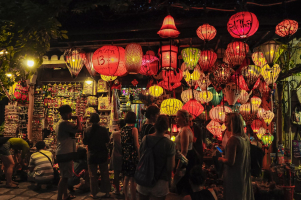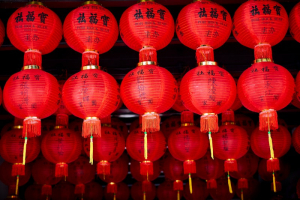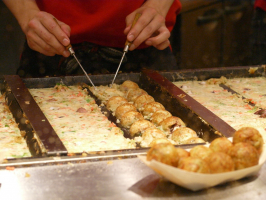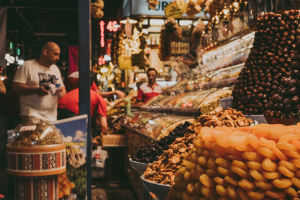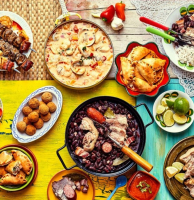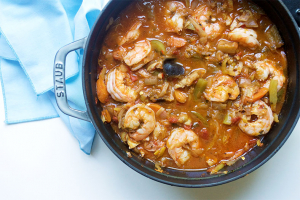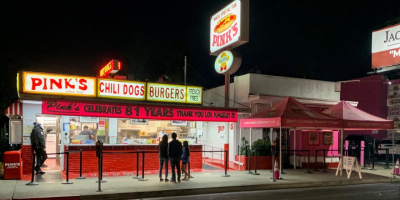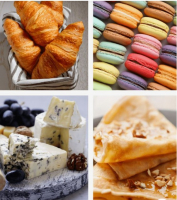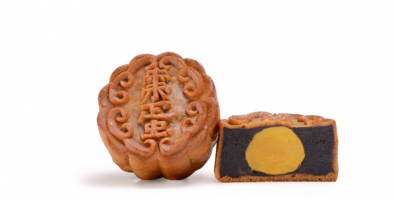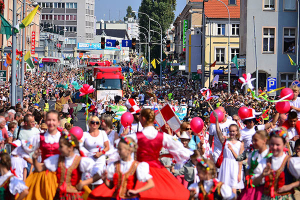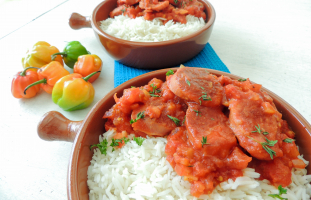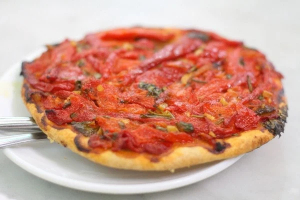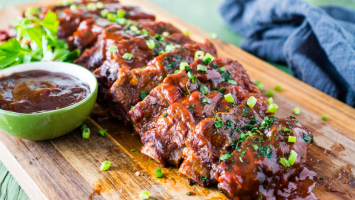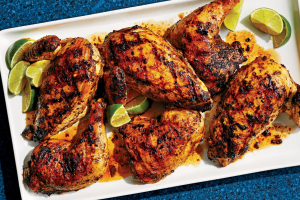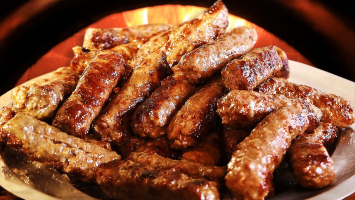Top 5 Best Famous Foods in Korean Mid-Autumn Festival
Chuseok is one of the major traditional holidays in Korea. Chuseok is also known as Korean Mid-Autumn Festival or Thanksgiving. This holiday is usually ... read more...celebrated for 3 days. According to the lunar calendar, Chuseok is August 15, according to the normal calendar, this holiday usually falls in mid-September or October. Families often gather and celebrate on these days to pay respects to ancestors. In the morning of Chuseok, the family usually cooks and sets a table with a variety of traditional foods such as rice cakes, fruits, fried foods, etc. Below Toplist will introduce dishes that are often cooked and eaten during Chuseok.
-
Songpyeon is one of the most iconic dishes of Chuseok. Songpyeon is often molded into small cakes with many different shapes and a variety of fillings. These little rice cakes are made with natural food colors and stuffed with a variety of fillings such as peanuts, sesame seeds, sweet sesame seeds, chestnuts, etc.
Koreans often mold it into the shape of a new moon or a circle to symbolize this new moon celebration. In particular, they are often steamed with pine needles to not stick and make the dish taste much more delicious. According to Korean legend, women who make beautiful Songpeon will have beautiful children and happy marriages.
You can learn more Songpyeon recipes: https://kimchimari.com/how-to-make-songpyeon-for-chuseok/
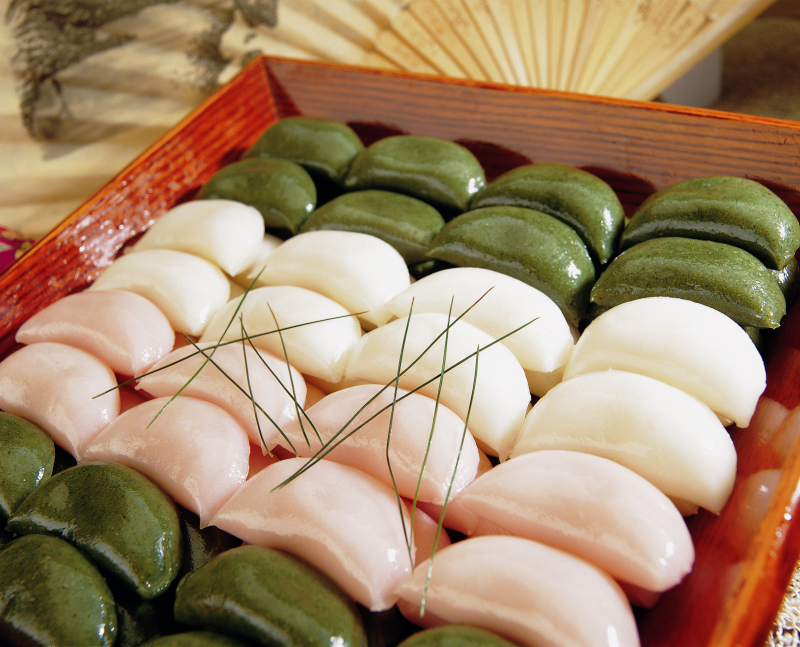
Songpyeon 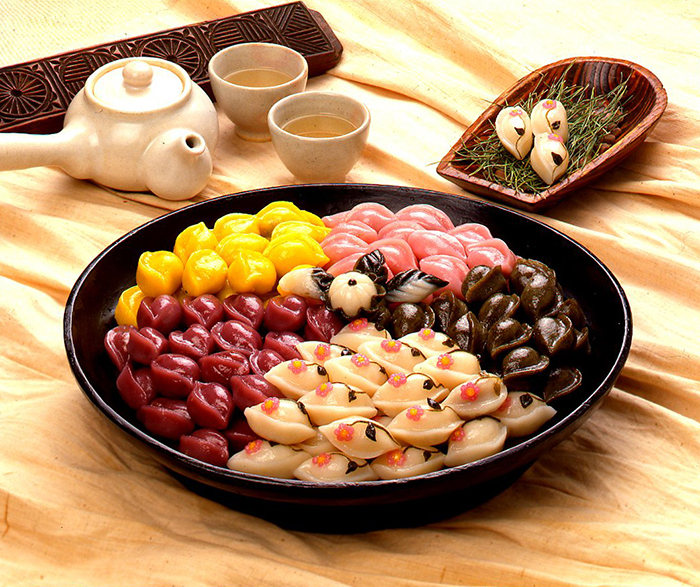
Songpyeon -
Jeon are savory fried pancakes. Jeon is a very popular dish in Korea even on weekdays. During Chuseok, this dish is also one of the indispensable dishes because it is a traditional dish of Koreans. Because the preparation is quite easy and can be combined with many different ingredients, there are many types of Jeon.
However, during the Chuseok holiday, Koreans usually make Kimchijeon. As the name implies, these are pancakes combined with kimchi. One note is that this dish is not made with fresh kimchi, but with sour kimchi that has been salted to make a true kimchijeon. Sometimes, kimchi can be salted too much and for a long time, Koreans can use it to make this dish.
You can learn more Jeon recipes: https://brendid.com/korean-vegetable-pancake-jeon/
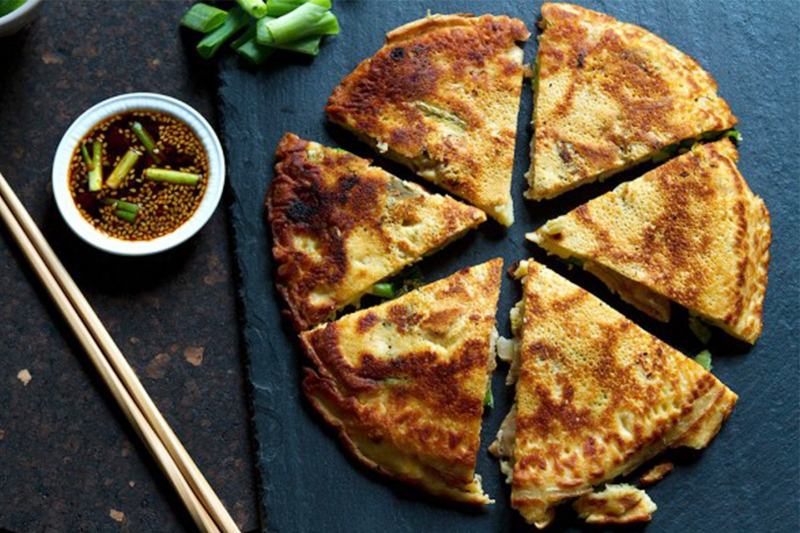
Jeon 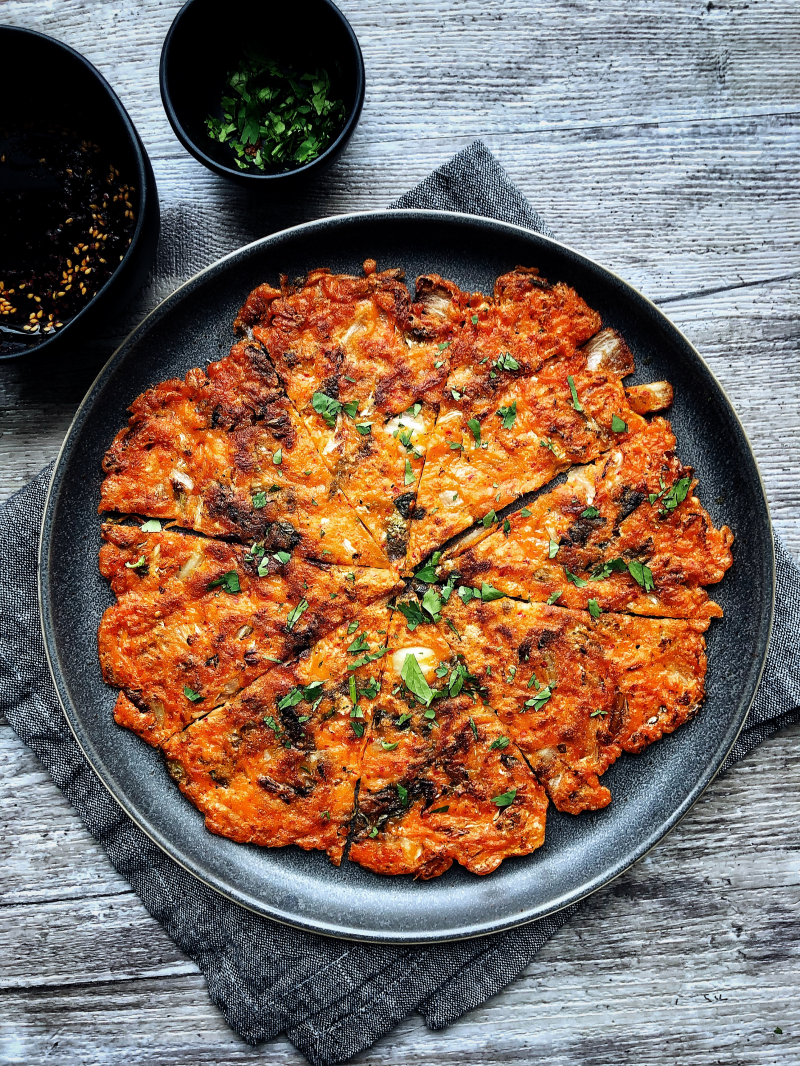
Kimchi Jeon -
Japchae is a dish made from sweet potato starch noodles, various vegetables and some mushrooms. The most common vegetables added to japchae are carrots, spinach, green onions, and red peppers. You can try different vegetables according to your preference. If you are not a vegetarian or vegan, you can also add meat and eggs to your japchae.
For traditional japchae, the chewy and springy noodles are nicely paired with thin strips of beef (or pork) and various vegetables in a slightly sweet and savory sauce. It’s also common to add an egg garnish.
You can learn more Japchae recipes: https://mykoreankitchen.com/korean-glass-noodle-stir-fry-japchae/
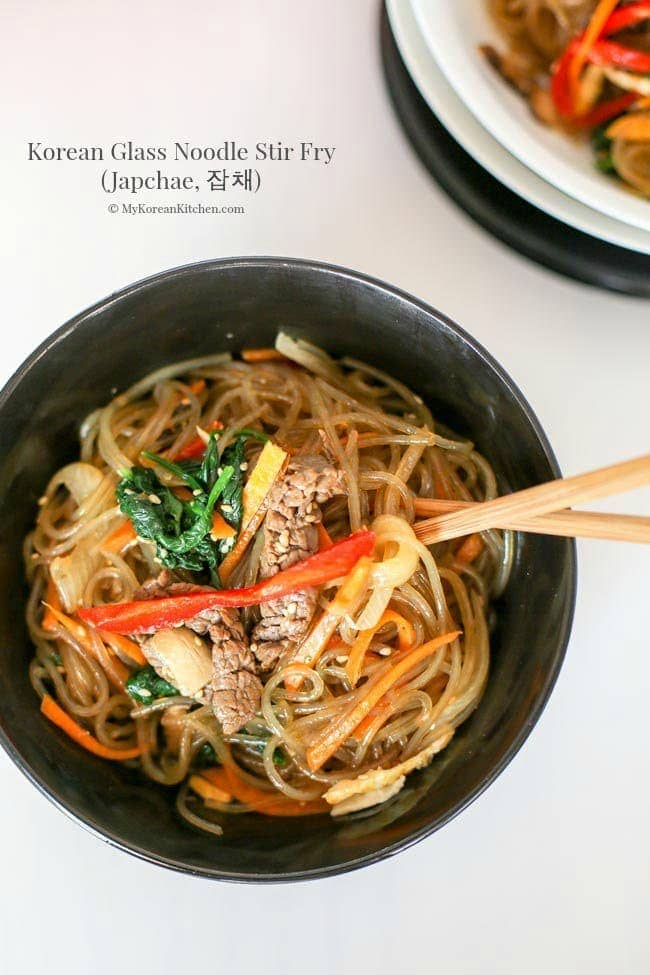
Japchae 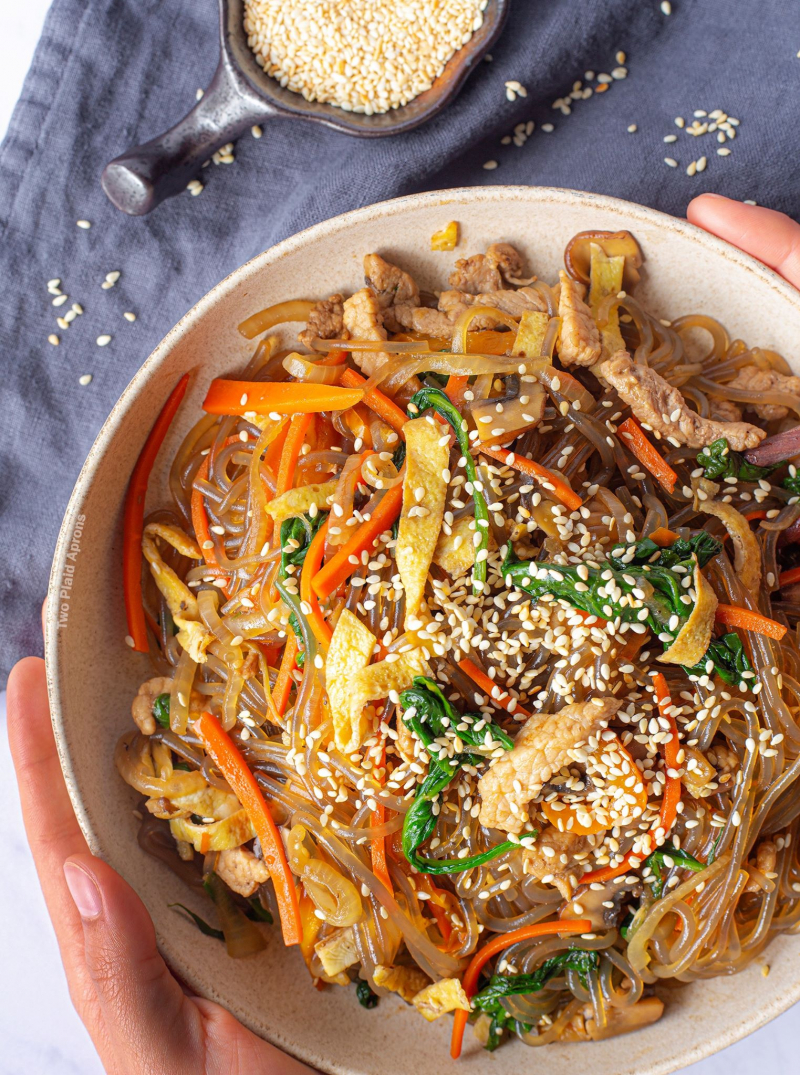
Japchae -
In Korean, Three-colored namul or samaek namul is a three-colored vegetable dish. This is a type of banchan (side dish) of Korea. Three colors including white, brown and green are trees. This is the color of three vegetables: bellflower root (white), spinach (green), and fern (brown).
If you have seen Korean dining tables, there are many side dishes whether at home or outside the restaurant. In particular, during holidays like Chuseok, banchan (side dishes) is definitely indispensable. Each family will make different dishes, but the minimum dish is samaek namul.
You can learn more Samaek Namul recipes: https://kimchimari.com/samsaek_namul_green/
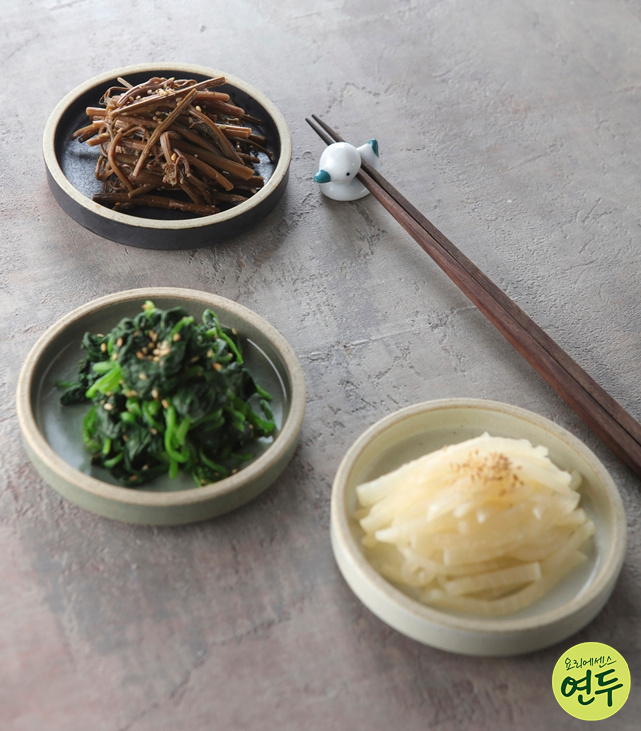
Three-colored namul 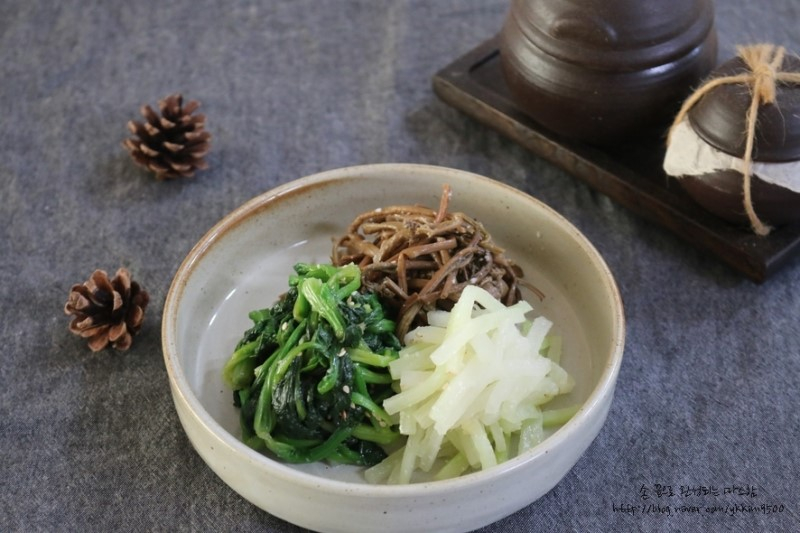
Three-colored namul -
Yakgwa is a traditional Korean cake that is usually made on holidays and special occasions such as Chuseok, weddings, birthdays, etc. Yakwa is made from flour, oil and honey.
Yakwa is a dish that requires the patience and ingenuity of the baker. Dishes are often hand-shaped into small shapes such as circles, diamonds, flowers, etc. Then it will be soaked and fried. This dish is often substituted for dessert rather than eaten as an everyday snack.
You can learn more Yakgwa recipes: https://kimchimari.com/yakgwa-or-yakwa/
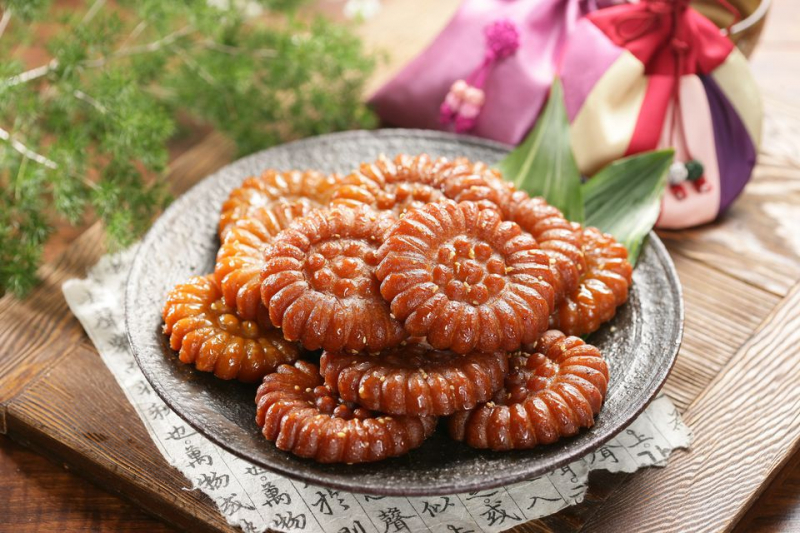
Yakgwa 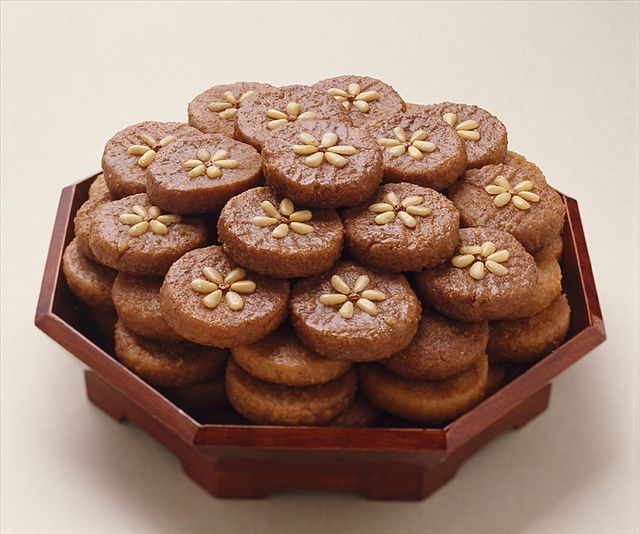
Yakgwa







